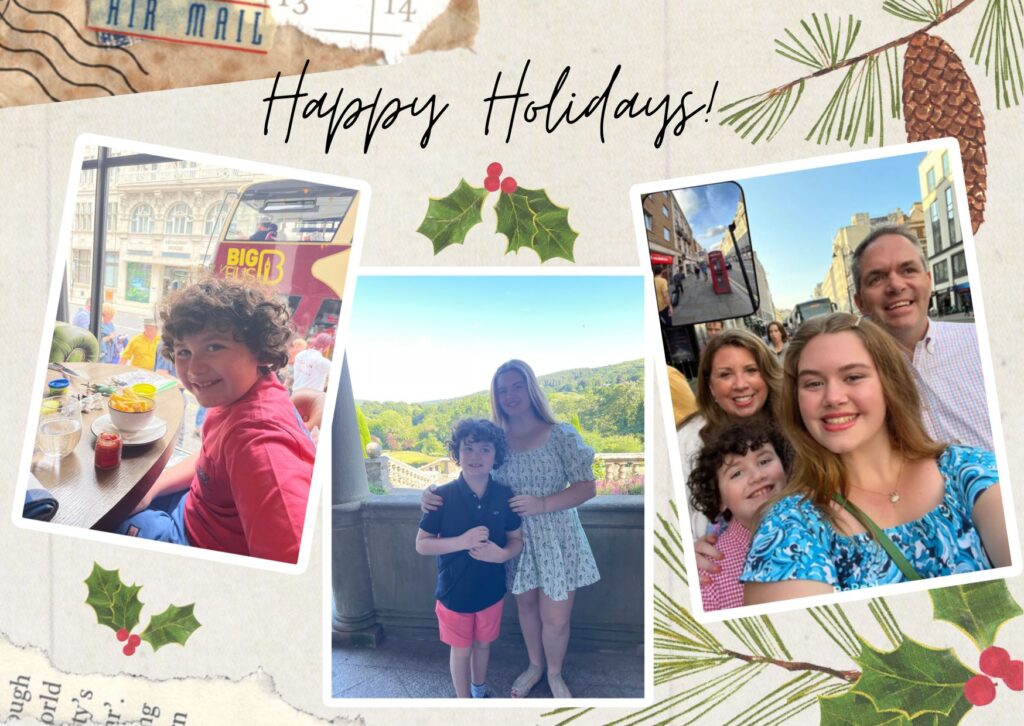How To Ease Your Anxiety When You Have To Interact With New People

Interacting with new people can be a source of anxiety and stress for many people. Whether it’s attending a social event, starting a new job, or joining a new community, the prospect of interacting with unfamiliar faces often brings about feelings of nervousness and apprehension.
Social anxiety has been on the rise for many years with approximately 15 million adult Americans dealing with its symptoms today. The symptoms of this kind of anxiety can manifest in various ways, including physical symptoms such as sweating and trembling, as well as psychological symptoms like racing thoughts and fear of judgment.
Acknowledging that social anxiety is a common experience for many people can be reassuring. If you’re dealing with it, you’re certainly not alone. 15 million translates to more than 7% of the adult population and with its growing prevalence, there are many innovative ways to manage and ease your symptoms.
Below are insights and actionable tips to help ease your feelings as well the discomfort associated with social engagements. Even if you make slow progress, taking these tips to heart is how you can start to improve your social experiences.
What Does It Mean If You Get Nervous or Anxious Around New People
Feeling nervous or anxious around new people can range from simply feeling worried about what’s about to come, to feeling paralyzed to even speaking with someone new. This form of social anxiety often stems from a variety of factors. These can include fear of judgment, fear of rejection, or a lack of confidence in social settings. It’s important to understand that these feelings are a normal part of the human experience and can happen to anyone, regardless of age or social experience.
When you get nervous or anxious in this way, it often means that your brain perceives social interactions as potential threats. When this happens, it can trigger your body’s fight-or-flight response, leading to physical symptoms such as increased heart rate, and sweating.
In some cases, you may also experience psychological symptoms like racing thoughts, self-doubt, and excessive worry about how others perceive you. However, understanding these reactions as natural responses helps to demystify the experience and pave the way for effective coping strategies.
How Common is Social Anxiety if You’re Neurodivergent?
If you’re neurodivergent—living with ADHD, autism, or other differences—social anxiety is more common than you might think. Many people with differently wired brains struggle in social settings, especially when the rules feel unclear or constantly changing.
Neurodivergent individuals often face judgment or criticism for behaviors they can’t easily control, like interrupting, missing cues, or being “too much” or “too quiet.” Over time, these experiences can lead to a fear of saying the wrong thing or being misunderstood.
This anxiety isn’t a flaw. It’s often a response to past experiences and the stress of navigating social spaces that don’t always feel welcoming. You’re not alone, and you’re not broken. With support, you can learn to manage social anxiety in a way that works for your unique brain.
How ADHD Traits Influence Social Anxiety
ADHD affects how you manage thoughts, emotions, and behaviors, which can make socializing harder. Traits like impulsivity, poor self-monitoring, and emotional reactivity often increase social anxiety.
You might blurt things out, overshare, or forget names mid-conversation. You may miss cues, react strongly to feedback, or get stuck thinking about something you said hours ago. All of this can make you second-guess yourself and feel anxious in future interactions.
Start with the Basics: 8 Ways Everyone Can Ease Anxiety Around New People
Easing anxiety when interacting with new people involves a combination of preparation, mindfulness techniques, and lifestyle adjustments. Here are some effective strategies to help you manage and reduce social anxiety:
Prepare with a Few Conversation Starters
Having a few conversation starters can make you feel less stressed and confident. Easy options to consider include current events, hobbies, or shared interests that can easily spark a conversation. This preparation can help alleviate the fear of running out of things to say and make interactions flow more smoothly.
Breathe
Deep breathing exercises can help calm your nervous system and reduce anxiety. Before and during social engagements, take slow, deep breaths to lower your heart rate and promote relaxation. Practicing mindful breathing regularly can make it easier to employ this technique when you need it most.
Get Grounded
Grounding techniques can help you stay present and focused during social interactions. One effective method is to notice and name things you can see, things you can touch, things you can hear, things you can smell, and one thing you can taste. This technique can distract your mind from anxiety and bring you back to the present moment.
Count in Your Head
Counting in your head can serve as a simple distraction technique to manage anxiety. Counting slowly to ten or focusing on counting your breaths can help interrupt anxious thoughts and provide a sense of control during engagements.
Take Pauses or Breaks
If you start feeling overwhelmed, it’s okay to take a pause or step away for a brief moment. Excuse yourself to the restroom or take a short walk to clear your mind and regroup. Taking these small breaks can make you feel less anxious and allow you to return to the conversation feeling more composed.
Find a Reason to Interact or Talk
Having a purpose or reason for engaging in conversation can make interactions feel more natural. Whether it’s asking for advice, discussing a mutual interest, or simply complimenting someone, having a clear reason to interact can reduce anxiety by giving the conversation a clear direction.
Limit Your Caffeine Intake
Caffeine can increase feelings of anxiety and make you feel more jittery. If you know you’ll be in a social situation, consider limiting your caffeine intake beforehand to help keep your anxiety levels in check.
Limit Your Alcohol Intake
While alcohol might seem like an easy way to ease social anxiety, it can actually make anxiety worse in the long run. Drinking in moderation or avoiding alcohol altogether can help you maintain better control over your emotions and interactions.
By incorporating these strategies into your routine, you can reduce anxiety and feel calm when interacting with new people.
Are There Neurodivergent-Friendly Tips To Make Interacting With Others Easier?
Yes, there are. Traditional advice like “just be yourself” or “make small talk” often doesn’t help when your brain works differently. The good news is, there are strategies that fit your needs and make connecting with others feel more doable.
Start with preparation. Think of a few conversation starters ahead of time. Choose topics you like such as books, pets, food, or shows, so you’re not scrambling to think of something in the moment.
Next, manage your energy. If long events or large groups wear you out, give yourself permission to take breaks. Step outside, visit the bathroom, or sit in a quiet spot to recharge.
Finally, change the goal. Instead of trying to impress anyone, focus on small wins like making eye contact, saying hello, or asking one question. These small steps build comfort and confidence over time.
Understanding and Managing Oversharing
Oversharing means saying more than you meant to, especially with someone you don’t know well. For many people with ADHD or other neurodivergent traits, this happens because of excitement, emotion, or trouble knowing what’s okay to say.
You might get so passionate about a topic or feel nervous and just start spilling. Then later, you replay it in your head and feel embarrassed. This is common and nothing to be ashamed of.
Here are a few tips that help:
- Notice who you’re talking to. Do you know and trust this person?
- Match their tone. If they’re being light, you can keep it light too.
- Have a recovery plan. Say something like, “That was a lot of information. Tell me about your day.”
Oversharing is not a flaw. With awareness and practice, you can manage it in a way that still lets you be your authentic self.
Using “Social Spy” to Decode Situations
Social Spy is a fun way to observe people and social dynamics without pressure. You’re simply gathering clues to help you understand what’s going on around you.
Start by scanning the room. Are people grouped together or standing alone? Does the energy feel calm or lively?
Then, take a closer look. Is someone smiling or fidgeting? Are they leaning in or stepping back? These small details help you figure out if someone wants to chat or seems ready to leave.
The goal isn’t to judge or change yourself. It’s to get more information so you can decide what to do next with more confidence.
Practice Reading the Room
Reading the room means noticing the mood, the energy, and what people are doing before you jump into a conversation. It’s a skill that improves the more you practice it.
Start by taking a moment to pause and observe. Ask yourself:
- Who’s doing most of the talking?
- Are people laughing and relaxed, or quiet and focused?
- Is it a casual moment or a serious one?
Try using the PEAS method: People, Environment, Actions, and Similarities. What do people have in common? What’s happening in the space around you?
Practice this in low-stakes places like coffee shops, libraries, or group events. Over time, you’ll get better at noticing what’s going on and knowing how to join in or take a step back when needed.
Start Small but Regular Practice is Key
Regular practice is key to managing anxiety in social situations and becoming more comfortable when you meet new acquaintances.
Here are some ways to integrate consistent practice into your routine:
1. Engage in Frequent, Low Stress Social Activities
- Participate in clubs, classes, or groups that interest you. Regular involvement in these settings provides structured opportunities to interact with new people or make a new friend in a low-pressure environment.
- Make a habit of attending social events, even if they are small gatherings. The more you expose yourself to these situations, the more you will become accustomed to them.
2. Role-Play Scenarios
- Engage a trusted friend or family member in role-playing different social scenarios. This practice can help you prepare for real-life interactions by simulating common situations like introductions, conversations, and farewells.
- Practice speaking and maintaining eye contact in front of a mirror. This technique helps you become more aware of your body language and facial expressions, making you feel more confident during actual interactions.
3. Use Visualization Techniques
- Spend a few minutes each day visualizing successful social interactions. Imagine yourself feeling calm, confident, and engaging positively with others. Visualization can reduce anxiety by mentally preparing you for actual situations.
4. Gradually Increase Exposure to More Challenging Social Situations
- Start with familiar environments and slowly venture into new settings. This incremental approach helps desensitize your anxiety triggers.
- Volunteering for events or causes you care about can provide structured and meaningful opportunities to interact with others while focusing on a shared goal.
5. Reflect and Adapt
- After each social interaction, take time to reflect on what went well and what could be improved. Use these insights to adjust your approach for future interactions.
- Be open to adjusting your strategies based on your experiences. Flexibility in your approach allows you to find the most effective methods for managing your anxiety.
In short, consistent practice builds confidence and competence, making interactions with new people more manageable and enjoyable over time.
Easing anxiety when interacting with new people is a gradual process that requires patience, practice, and the implementation of effective strategies. By understanding the nature of social anxiety, preparing conversation starters, using calming techniques, and practicing regularly in varied social settings, you can build confidence and reduce anxiety over time.
It’s important to recognize that occasional nervousness is normal and that managing anxiety is about developing tools and habits that foster comfort and self-assurance in social engagements.
If you want more support, tips, and relatable stories about navigating social life with ADHD or social anxiety, I invite you to visit my YouTube channel. I share videos weekly that offer friendly guidance and real-life tools to help you feel more confident in everyday interactions just like this one. You can find them all on my channel, https://www.youtube.com/@authorcarolinem



